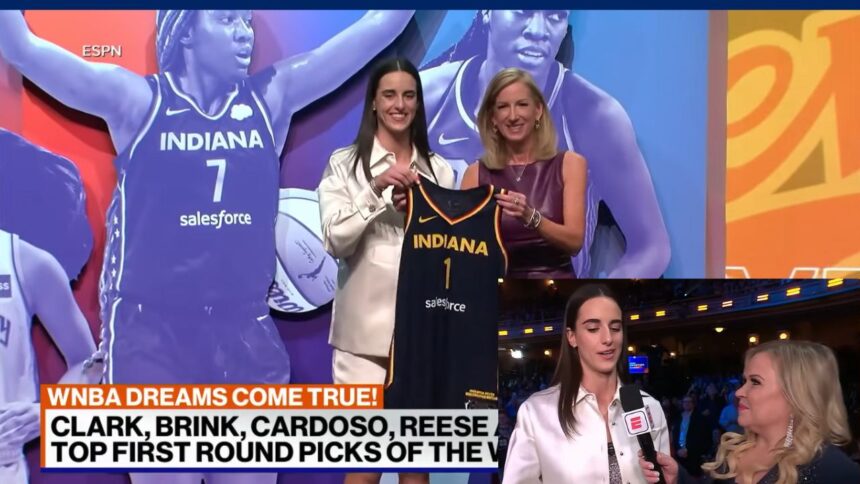The revelation of Caitlin Clark WNBA salary has sparked a heated discourse about the persistent gender pay gap in professional sports. Clark, the standout player from the University of Iowa, was selected as the first overall pick in the 2024 WNBA Draft by the Indiana Fever.
However, the excitement surrounding her entry into the league was quickly overshadowed by the stark contrast between her salary and that of her male counterparts in the NBA.
A Glaring Disparity
According to reports, Clark is set to earn a total of $338,056 over her first four years in the WNBA. Her rookie year salary will be $76,535, followed by $78,066 in her second year, $85,873 in her third year, and $97,582 in her fourth year.
These figures have left fans and public figures alike in disbelief, particularly when compared to the earnings of NBA players.
Victor Wemba Yama, last year’s first overall NBA draft pick, is set to earn a staggering $55.7 million during his initial four years.
Even the smallest NBA contract for this season, belonging to Javon Freeman-Liberty of the Toronto Raptors, is worth $289,542. The disparity between the two leagues has long been a point of contention for WNBA supporters.
The Fight for Equal Pay
The fight for equal pay in women’s sports is not a new one. Athletes, teams, and leagues have been leading the charge for years, working towards the day when pay equality is achieved.
The U.S. Women’s National Soccer Team (USWNT) has been at the forefront of this battle, recently suing U.S. Soccer for “institutionalized gender discrimination” and seeking equitable pay and treatment.
Similarly, WNBA stars including A’ja Wilson, Brittney Griner, Liz Cambage, and Skylar Diggins-Smith have spoken out about the disparity in salaries compared to their NBA counterparts.
“As athletes, we have to fight. As women, we have to fight,” Diggins-Smith told Bleacher Report.
The Impact of Investment and Media Coverage
One of the key factors contributing to the gender pay gap in sports is the lack of investment and media coverage for women’s leagues and events.
Studies have shown that women’s sports receive significantly less media attention than men’s sports, which in turn affects revenue generation through sponsorships, ticket sales, and broadcasting rights.
However, there are signs of progress. The NCAA women’s basketball tournament has seen record-breaking viewership in recent years, with the championship game between Iowa and South Carolina drawing 18.9 million viewers.
The increased visibility of women’s sports has led to greater investment from sponsors and broadcasters, with the WNBA recently announcing a new four-year broadcast deal worth $240 million.
Looking to the Future
Despite the challenges, there is reason for optimism. WNBA commissioner Cathy Engelbert has expressed her intentions to address the pay disparity issue, with plans for charter flights for teams and increased salaries for players.
The league’s recent draft class, featuring stars like Caitlin Clark, Angel Reese, and Kamilla Cardoso, has generated significant buzz and interest, leading to increased ticket sales and televised games.
As Jessop, a sports business expert, notes,
“If we’re going to see greater compensation to these world-class athletes, what needs to happen is one, more broadcast of their games, which two will drive advertising revenue, and three, will drive further the valuation of that TV contract, which will put more money into their pockets.”
The fight for equal pay in women’s sports is far from over, but the conversation sparked by Caitlin Clark’s salary is a reminder of the work that still needs to be done.
As fans, media, and stakeholders, it is our responsibility to support and invest in women’s sports, ensuring that the athletes who dedicate their lives to their craft are fairly compensated for their efforts.
Check Also: Tarleton State Dominates Texas Southern in Doubleheader Sweep





